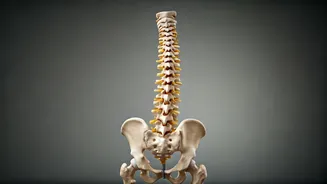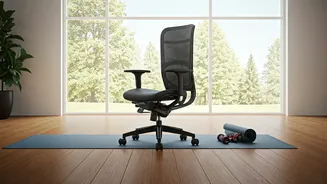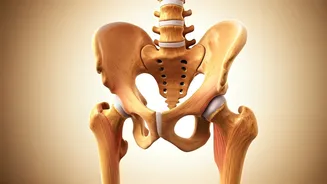Posture Basics Matter
Maintaining good posture is crucial for overall health and well-being, yet many individuals unknowingly adopt poor habits. The way you hold your body,
whether sitting, standing, or moving, directly impacts your spine, muscles, and internal organs. Ignoring posture can lead to a cascade of problems, including back pain, neck strain, headaches, and even digestive issues. Proper posture ensures that your body is in alignment, reducing stress on joints and allowing for efficient muscle function. This alignment minimizes the risk of injury during daily activities and exercise. Awareness of your body's position is the first step toward better posture. Try to be mindful of how you sit at your desk, how you lift objects, and how you carry yourself throughout the day. Regularly check your posture by using a mirror or asking a friend for feedback. Regular practice of these habits will lead to long-term benefits for your physical well-being.
Common Posture Mistakes
Several common posture errors contribute to discomfort and potential health issues. One frequent mistake is forward head posture, where the head juts forward, placing extra strain on the neck and upper back. Another is rounded shoulders, often caused by prolonged sitting or hunching over screens. This posture can compress the chest, restricting breathing and causing shoulder pain. A third error is excessive lower back curvature, known as hyperlordosis, which can cause back pain and imbalance. Identifying these mistakes is essential for targeted correction. It is important to know that these postures can result from environmental factors like poor workstation setups, lifestyle choices such as inadequate exercise, or even underlying muscle imbalances. To effectively address these errors, you must understand their origins. When sitting, make sure your chair supports your lower back and that your feet are flat on the floor or supported by a footrest. During the day, stand up, stretch and walk around to keep these issues at bay.
Fixes: Expert Strategies
Addressing postural problems requires a multifaceted approach, involving both conscious effort and targeted exercises. Correcting forward head posture includes exercises such as chin tucks, where you gently pull your chin towards your neck, and neck stretches that involve tilting your head to the side. Rounded shoulders can be tackled through chest stretches, such as the doorway stretch, and exercises that strengthen the back muscles, like rows. Addressing hyperlordosis involves strengthening the abdominal muscles to support the lower back and stretching the hip flexors to release tension. Consider setting reminders to check your posture throughout the day and make any necessary corrections. Incorporate postural exercises into your daily routine. Regular physical activity, including cardiovascular workouts and strength training, supports overall health and strengthens the muscles that contribute to good posture. If the problem persists, consulting a physical therapist or a specialist can offer personalized advice and therapeutic interventions.
Daily Posture Habits
Building good posture involves integrating supportive habits into your daily life. Conscious awareness is key; regularly check your posture and make adjustments as needed. When working at a desk, ensure your monitor is at eye level to prevent neck strain. The chair should provide lower back support, and the keyboard and mouse should be positioned to avoid reaching. Avoid prolonged sitting by taking regular breaks to stand, stretch, and walk. This will help prevent muscle stiffness and encourage blood circulation. Make it a routine to stretch for a few minutes every day, focusing on areas prone to tension, such as the neck, shoulders, and lower back. Doing exercises that strengthen core and back muscles will provide the necessary support for good posture. The daily application of these habits will lead to long-term improvements in posture and contribute to an overall sense of well-being.
Exercise for Posture
Specific exercises play a significant role in improving posture by strengthening key muscle groups and promoting flexibility. For forward head posture, the chin tuck is a simple but effective exercise. For rounded shoulders, the doorway stretch helps open up the chest muscles, while rows and other back exercises strengthen the muscles that pull the shoulders back. To address hyperlordosis, strengthen the core muscles with planks, crunches, and other core-strengthening exercises. Regularly incorporate these exercises into your fitness routine. Remember to warm up before exercising and cool down afterward to prevent injuries. Start slowly and gradually increase the intensity and duration of your exercises as your body adapts. Consistency is essential for noticeable results. Be patient, as it may take time to see significant improvements in your posture. If you're new to exercise or have any health concerns, consult with a healthcare professional or a certified personal trainer to ensure you are exercising safely and effectively.













